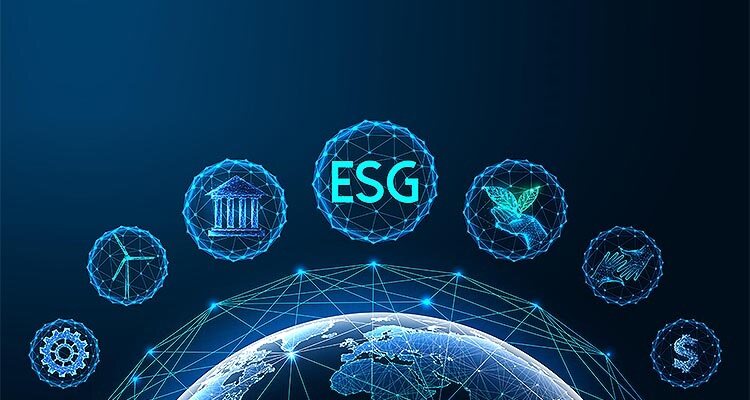Unlocking the key steps to advancing business sustainability around the globe
In an era where global consciousness about environmental impact and social responsibility is on the rise, businesses worldwide are grappling with the imperative to embrace sustainability, and those in the US are increasingly recognizing their pivotal role in shaping a sustainable future. This realization is leaving a lasting imprint on how American industries operate and adapt. It is therefore important in this viewpoint to delve into the nuances of business sustainability, regional disparities, and how American companies are navigating this critical landscape.
As part of BearingPoint’s view on sustainability, we recently completed a global research paper that informs much of my thought on sustainability. The paper not only highlights how firms can become leaders in the areas of sustainably but provides interesting insights into regional disparities. Keeping the latter in mind, the regional disparities not only provide key insights into how firms think about sustainability measures but also how their regional alignment dictates their desires to be leaders in sustainability within their respective firms.
A tale of three continents
As it relates to regional disparities, our study reveals a clear difference in how each region views sustainability, and the measures those firms are taking to execute their visions. Going east to west from Asia to Europe to the Americas, it shows that Asian firms are driving sustainability as a form of competitive advantage. We concluded that this is due to where Asia sits in the overall global supply chain; as the largest production hub of the world, its products are early in the supply or value chain.

On the other hand, European firms, being primarily at the end of the value chain, are looking to their industry contemporaries and their governments to set the agenda. Firms in these regions are actively seeking inspiration from global best practices and are committed to integrating sustainable principles into their operations.
As for the Americas, our study shows that the US operates with a strong company-centric focus, meaning each individual firm or industry is driving their own agenda. Rather than looking overseas, they are concentrating on internal strategies.
Challenges facing US companies
Taking a deeper dive into the challenges faced by US companies, our study shows a few surprising things. First and foremost is a knowledge gap. It reveals that while 73 percent of US respondents consider their companies to be advanced in sustainability (rating eight, nine, or ten), there is still a significant knowledge gap. Many employees, especially those in operational roles, feel ill-equipped to tackle sustainability topics. The culprit? Insufficient training. Without proper education, even the most well-intentioned efforts can fall short.
The second topic is internal focus versus supplier engagement. US companies tend to look inwards and respondents prioritize their own organizations over suppliers when it comes to sustainability.
Finally, the leadership role in driving the sustainability agenda; when seeking guidance on sustainability strategies, American firms turn to their internal leaders. Approximately 55 percent of US companies rely on their own C-suite executives, managers, and team leaders for direction. While this internal focus fosters alignment, it also underscores the need for robust leadership training in sustainability. An intriguing paradox did come to mind as it relates to US firms’ leadership. While leadership perceives their companies as having advanced operational roles, those responsible for implementing the vision see things differently. Leadership was twice as likely to rate their sustainability agenda as advanced when compared to operational roles; bridging this perception gap is essential for effective execution.
The next steps
To achieve meaningful progress, sustainability cannot be considered through the siloed view of the sustainability team – it must be a topic that more formally involves all departments of an organization. A few topics to consider as a punch list:
Take action to quantify sustainability risks and incorporate longer term ESG macro trends like the long-term impact of global warming into their strategy. This will be essential to ensure business models are fit for purpose, allow firms to achieve sustainability goals, and ensure they have the right governance structures in place.
Invest in technology to drive decision making. Greater automation and visibility across sustainability metrics will be crucial to inform portfolio decisions, manage external communications, ensure greater regulatory compliance, and facilitate supply chain improvements.
Consider involving external stakeholders more effectively to drive progress and accountability. More effective stakeholder management can be maintained by actively collecting insights into customer preferences, and collaboration with suppliers can drive greater innovation.
Acknowledge that the success of any sustainability strategy depends on the capabilities of the individuals delivering change. Continuous improvement in employee wellbeing, role-specific sustainability training, and KPIs are essential for sustained progress.
As American businesses continue their sustainability journey, understanding regional disparities and investing in training are critical. By empowering employees at all levels, fostering supplier engagement, and aligning leadership perspectives, US companies can truly shape a sustainable future, one decision at a time. As industry leaders, we have a once-in-a-lifetime opportunity to build a legacy of responsible cross-border business practices that leave our world in a better place.
Chetan Rangaswamy is a Partner at management and technology consulting firm, BearingPoint. Chetan has more than 20 years of industry and management consulting experience helping clients in developing corporate strategies, delivering complex operations and procurement optimization initiatives, implementing operating model improvements, and securing cost savings.
